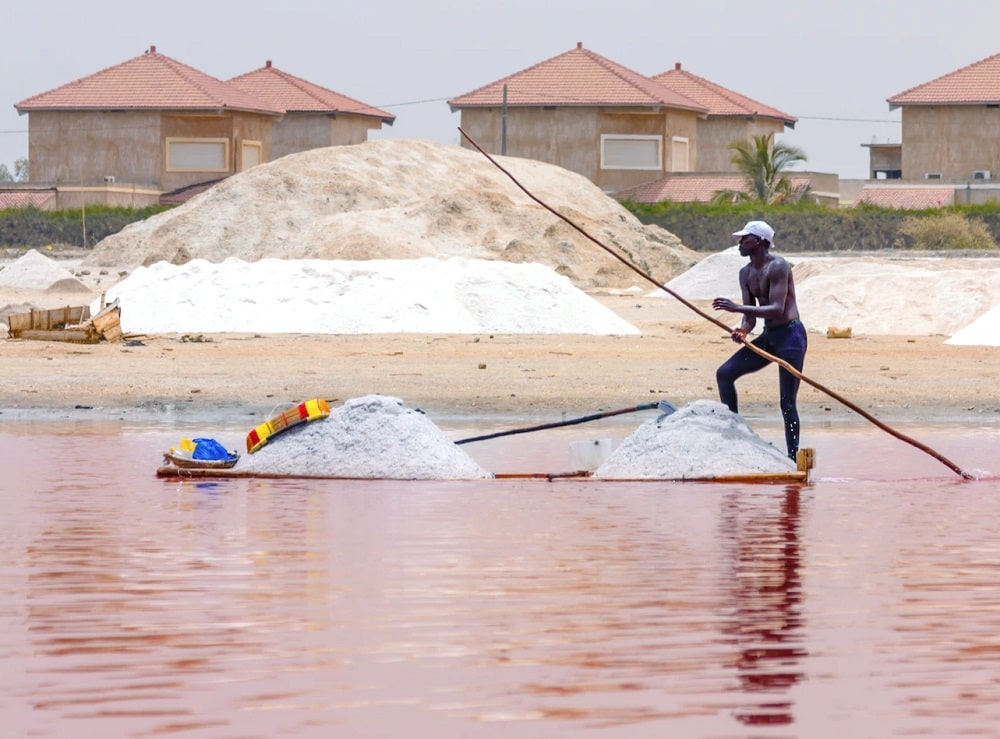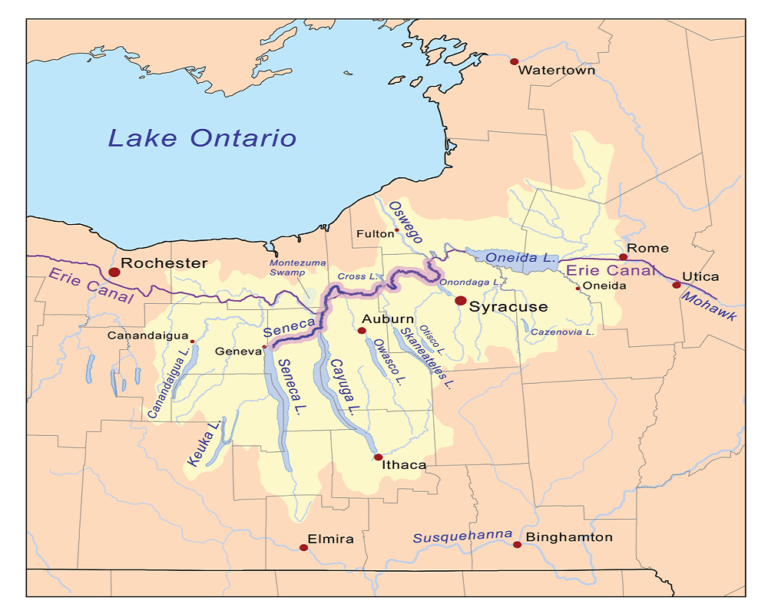Lake Retba in Senegal: A Marvel of Nature’s Pink Wonder
Last Updated on 5th June 2023 by admin
Welcome to the fascinating world of Lake Retba, which is also known as Lac Rose, located in the vibrant country of Senegal, in West Africa. In this article, we will explore the appealing features of Lake Retba, its geographical allure, the reasons for its vivid pink colour, the unique microorganisms that develop in its salty waters, the thriving salt extraction industry, a growing tourism industry, environmental concerns, a comparison to other pink lakes around the world, and the cultural significance it holds for the local communities. Let’s embark on this remarkable journey together!
Location and Geography
Lake Retba (Lac Rose) is a beautiful saltwater lake with a surface area of around three-square kilometres, located on the picturesque Cap Vert Peninsula just outside of the busy city of Dakar. Its advantageous location between the Atlantic Ocean and sand dunes is one of its most notable characteristics.
The location of the lake and the scenery in the area provide for a wonderful background. Its boundary is made up of golden sand dunes, which stand out against the vibrant pink waters. Lake Retba is a work of art because to its special combination of colours and natural features.
Unique Pink Color
Behold the amazing sight of the beautiful pink colour of Lake Retba (Lac Rose)! The combination of the lake’s high salt content and the presence of a unique variety of algae called Dunaliella salina causes this amazing phenomenon. The pink hues of the waters are created by these microscopic creatures, which grow in the severe salinity and produce a reddish pigment that mesmerises everyone who sees it.
The pink hue is especially noticeable during the dry season when additional salt and algae are left behind when the water evaporates. The lake is illuminated in a variety of pink shades, from soft pastels to rich rose hues, as the sunlight reflects off the water. Visitors are in awe of this natural phenomenon’s surreal splendour, which creates an environment that’s comparable of a dream.
Salinity and Microorganisms
The salinity of Lake Retba is unmatched, reaching to as high as 40% during specific periods of the year. To put this in perspective, remember that this lake’s salinity is almost 10 times saltier than the ocean. The majority of living forms face a hard environment due to this extreme salinity. The Dunaliella salina algae and halophilic bacteria, on the other hand, have adjusted to these circumstances and are now thriving in the salty lake waters.
The pink colour of Lake Retba is maintained in large part by the microorganisms that live there. The carotenoids, which are pigments that give the pinkish red colour its origin, are produced by photosynthetic organisms called Dunaliella salina algae. These algae can grow where other living forms struggle to live because they have developed the ability to handle the high levels of salt and strong sunlight.
On the other hand, the halophilic bacteria support the lake’s entire ecosystem. They contribute in the cycling of nutrients and help in the breakdown of organic substances. The environment of Lake Retba is delicately balanced by these unique microorganisms living in peace.
Salt Extraction Industry
The beaches of Lake Retba (Lac Rose) have become a thriving hub for salt extraction due to the lake’s high salt content. Local groups have been gathering salt for generations using traditional methods that have been handed down through the generations. Devoted labourers wade into the shallow lake depths during the dry season to physically gather salt crystals. The local economy benefits greatly from the subsequent drying and processing of these precious crystals, which also helps to safeguard the tradition of salt harvesting.
The labor-intensive salt extraction method at Lake Retba exemplifies the ingenuity and tenacity of the local populace. Many families rely on it as an important source of income, and it provides employment and sustains the livelihoods of people who live nearby. Because of its excellent purity and mineral content, salt from Lake Retba is highly paid for on both domestic and international markets.
Tourism and Attractions
Travellers from all over the world have been attracted by Lake Retba’s mysterious charm creating a growing tourist industry in the region. On boat trips, visitors may immerse themselves in the lake’s dreamy pink waves and take breath-taking pictures that will long preserve their memories.
The boat cruises offer a distinctive viewpoint that enables guests to see the lake’s beautiful colour palette up close. As they glide through the calm waters, surrounded by the rosy hues, they can fully appreciate the magnificence of this natural wonder.
Lake Retba provides a variety of activities for outdoor enthusiasts and environment lovers in addition to the boat tours. There is something for everyone to enjoy, from bird watching along the lake’s banks to kayaking and paddleboarding. Further complementing the visiting experience are the nearby landscape’s options for camel rides and desert excursions.
Additionally, visitors may participate in salt-harvesting activities to learn directly the traditional methods used by the people who live there. They may work alongside the salt harvesters, dressing in vibrant wraps and gathering salt crystals using traditional musical instruments. This immersive experience helps people comprehend the lake’s cultural importance and the labor-intensive process of extracting salt on an additional level.
Environmental Concerns and Conservation Efforts
Despite the fact that the pink colour of Lake Retba and the salt extraction business attract tourists and boost the local economy, there is an increasing need to address the environmental effect of these operations. The uncontrolled extraction techniques run the risk of disrupting the sensitive ecosystem of the lake and its surroundings. Sustainable practises and tougher laws are necessary to allay these worries and guarantee the long-term preservation of this natural beauty for future generations.
The unique environment of Lake Retba is being protected via conservation initiatives. Environmental organisations, local communities, and government agencies are working together to put policies into place that encourage ethical tourism, control salt extraction methods, and increase public understanding of the lake’s biological importance. These programmes aim to bring together environmental protection with economic growth in order to preserve Lake Retba’s natural beauty for future generations.
Comparison with Other Pink Lakes
Due to its remarkable pink hue, Lake Retba has been linked to a small group of left pink lakes that may be found all over the world, including Lake Hillier in Australia and Lake Masazirgol in Azerbaijan. While the visual spectacle of these lakes is similar, each lake has unique characteristics and geological factors that contribute to its own shade of pink.
The pink colour of Lake Hillier, for instance, is linked to the presence of halobacteria, a pink-colored bacteria. The lake’s pink colour is intensified by its white sand borders and shallow depth. On the other hand, the Azerbaijani lake Masazirgol is a delicate colour of pink thanks to the presence of small algae.
With its proximity to the Atlantic Ocean and the presence of certain microorganisms, Lake Retba serves as a mesmerising illustration of nature’s artistic creation. All who see the show created by the interaction of saltwater, sunlight, and microscopic life are captivated.
Cultural Significance and Local Traditions
In addition to its spectacular beauty, Lake Retba is of tremendous cultural value to the locals, especially the Fulani. They respect the lake, which is thought to have healing abilities. Traditional ceremonies and rites are carried out close to its beaches, reiterating the long-standing relationship between the lake and the nearby villages. By tying their existence to that of this natural marvel, these ceremonies show the people’s deep appreciation and admiration for it.
The lake has always been a source of livelihood and cultural significance for the Fulani people, who are also dependent on it for its salt. The traditional salt harvesting methods and the rituals associated with Lake Retba form an integral part of their identity, preserving age-old traditions and passing them on to future generations.
The pink magnificence of Lake Retba and the delights that that surround it leave us speechless as we come to the complete of our tour through this enthralling masterpiece. Lake Retba continues to fascinate the hearts and minds of those who come into contact with it, from its remarkable pink colour, which is attributed to the Dunaliella salina algae, to the flourishing salt extraction business, the developing tourism sector, and the ecological difficulties it faces. Let’s protect this precious the natural world, admire this natural treasure, and appreciate its cultural value to the Senegalese people.








